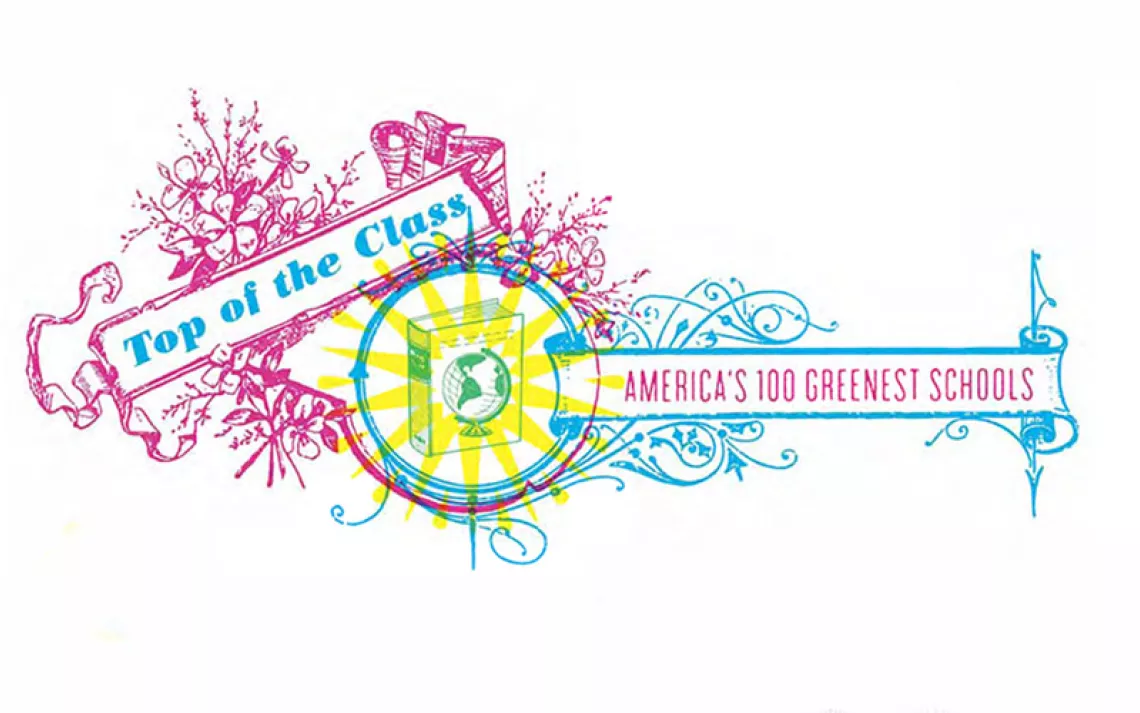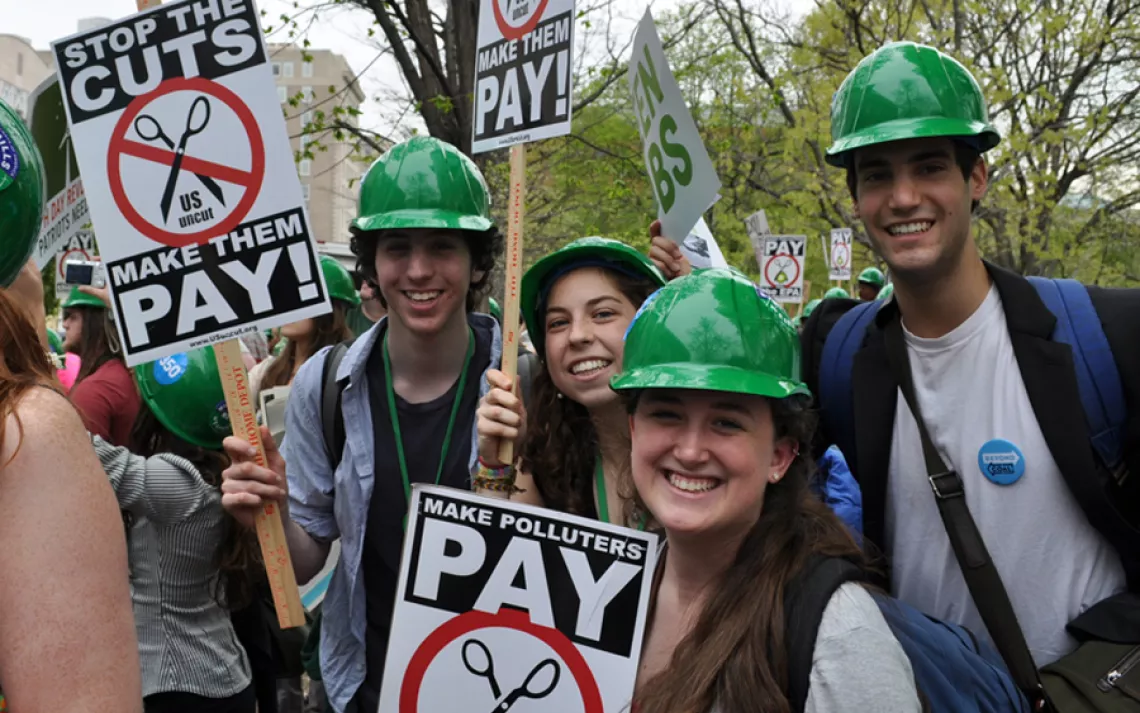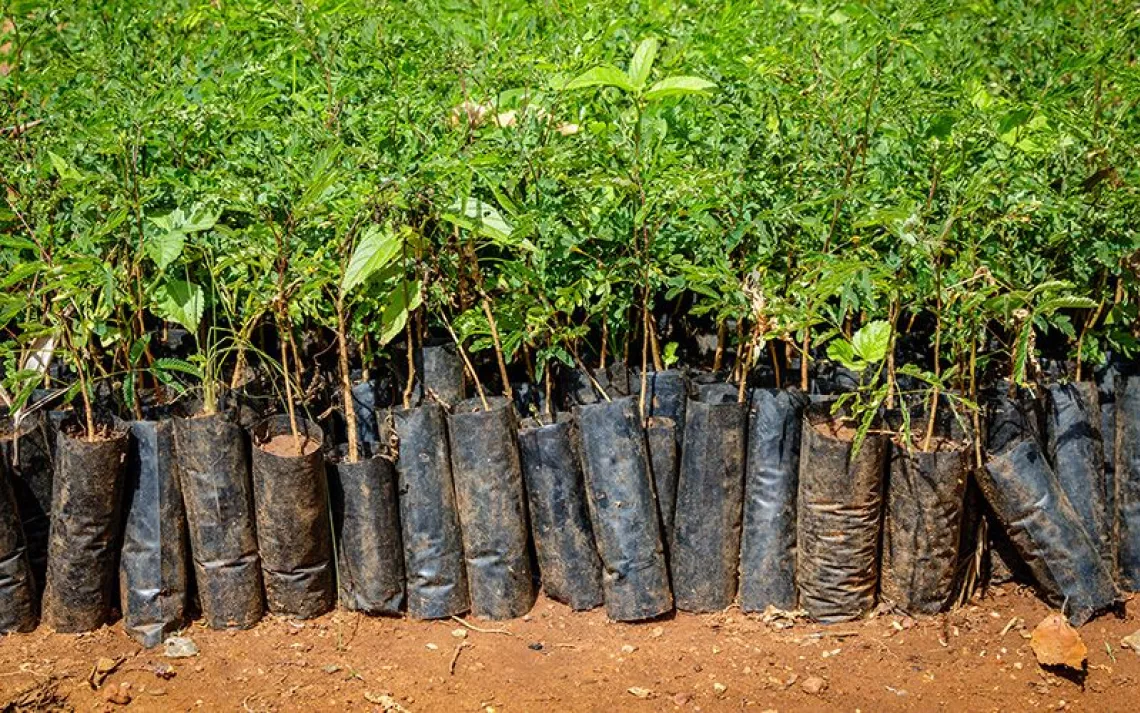The Top 20 Coolest Schools 2020
Here’s how they earned A+ marks, despite unprecedented challenges
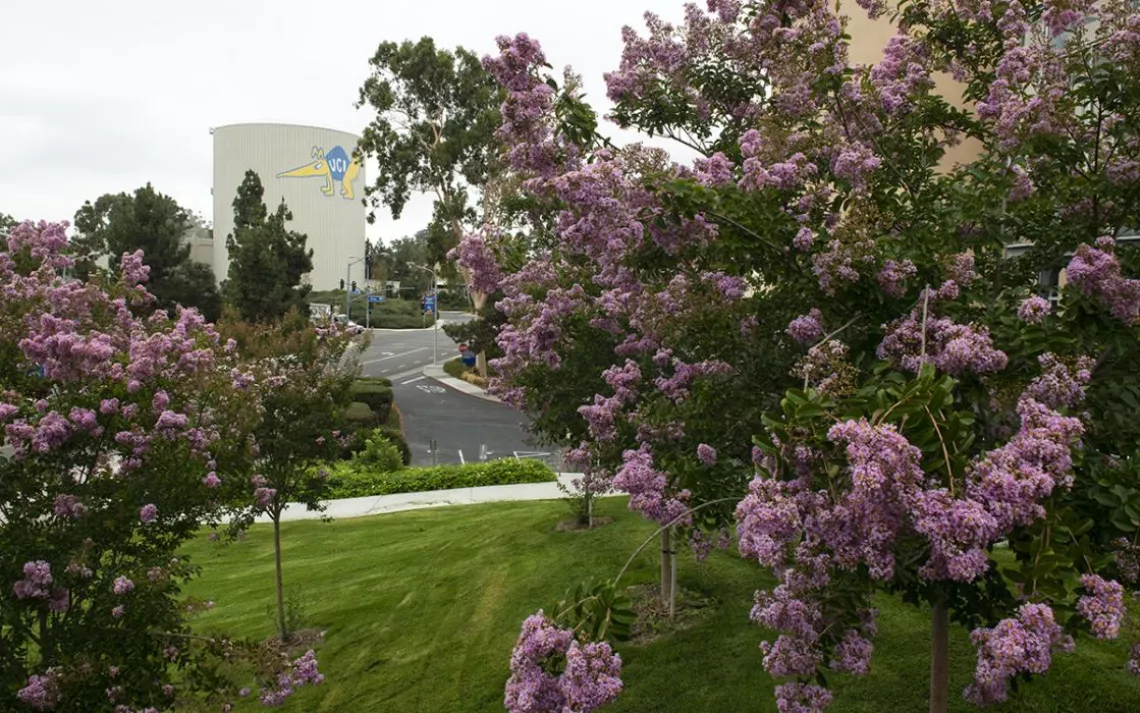
University of California, Irvine
The Top 20 | All 312 Schools Ranked | Methodology | FAQ | More Cool Schools
In the 14 years since Sierra started ranking colleges according to their eco bona fides and environmental commitments, one thing has become clear: Governments and businesses would be wise to take their cues from higher education. That’s because achieving carbon neutrality, divesting from fossil fuel companies, and incorporating sustainability into both campus operations and gen-ed curriculum have all become practically de rigeur in academia.
This year, a record 312 institutions participated in our annual Cool Schools rankings—a remarkable feat, given the fact it’s been a school year like no other. Beyond having to suddenly pivot to virtual learning and community-building because of the coronavirus pandemic, many schools had to backtrack. Those that had phased out plastic bags and takeout containers, for example, found themselves having to bring them back to comply with COVID-19 safety protocols. Despite such setbacks, the schools on this list have shown incredible resourcefulness as they have innovated new ways to maintain—and in many cases, further—their sustainability objectives.
Please join us in congratulating the following 20 tremendously cool schools. They’ve nearly mastered the most crucial subject of all.
Score: 79.41 | Seattle, Washington

Seattle University Kubota Gardens
After the pandemic altered Earth Day plans, Seattle U unveiled a virtual event complete with Earth Talks. Students and staff garnered national media attention for creating five-minute presentations—modeled after the popular TED talks—on hot buttons like climate communication and environmental racism. The campus community diverted nearly 70 percent of all waste this past school year (up from 56 percent the previous year), thanks to student-driven recycling audits. Students also launched the Edible Campus Initiative, through which a coalition works with grounds management to maximize edible, foragable plants on the urban campus. The university boasts a robust branch of Engineers for a Sustainable World. This year, the group implemented a reverse osmosis system in a Thai community; it cleans drinking water and eliminates locals’ need for plastic bottles.
Score: 79.45 | Santa Clara, California
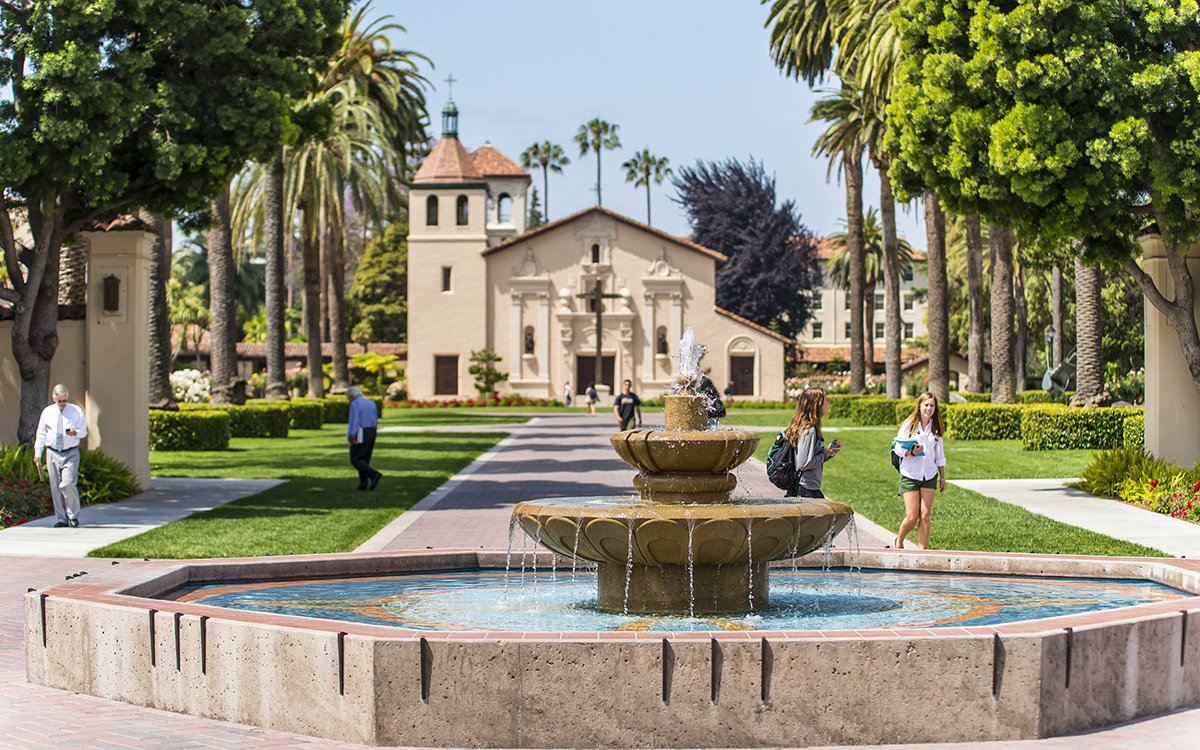
Santa Clara University
This perennially cool Jesuit university not only maintains playbooks that offer up sustainability actions for undergraduates, grad students, alumni, and staffers, but also custom-tailors them, providing varying plans for groups like first-year students, students living off campus, lab managers, faculty, and administration. (Once the pandemic shut down campus activity, SCU pivoted and developed citizen science pursuits such as tree tracking and energy insights programs, encouraging students to engage in their local urban forest and community's renewable energy goals.) In the midst of COVID-19, students and staff associated with SCU's Garden Programs (the Forge Garden and Bronco Urban Gardens)—through which students provide local elementary students with garden education—created “resilience boxes” and distributed produce, along with recipe cards and educational tools, to those kids’ families, many of whom were adversely affected by COVID-19 and its economic fallout, and to transitional-housing denizens as well. Since mid-March, SCU has donated 2,498 pounds of produce.
Score 79.61 | Davis, California
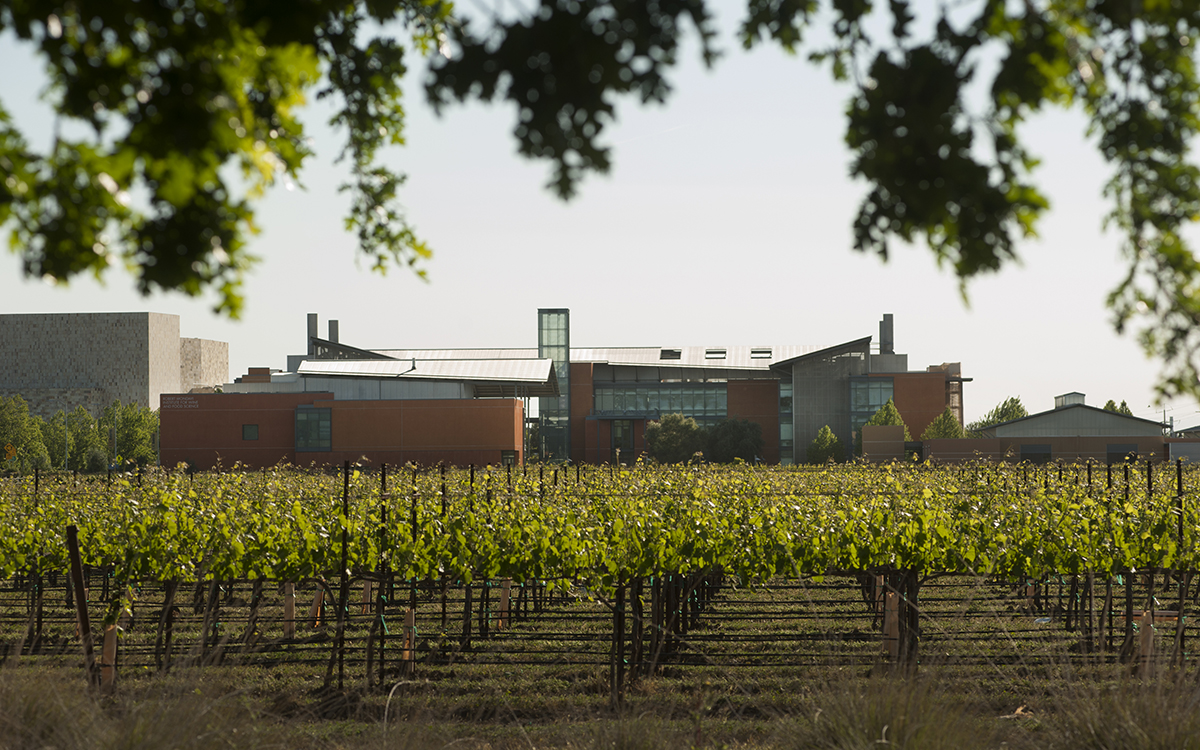
UC Davis, Southern Entrance
Considering UC Davis’s colorful history of student activism, it comes as little surprise that students were behind the school's official Fair Trade University designation in February 2020. In the Before Times, students worked with university staff and the city of Davis to electrify the student-run bus fleet. Even after COVID-19 struck, students were busy recovering food from restaurants to distribute at a weekly Davis Night Market and operating the campus CSA. At this ag-ed powerhouse, popular courses include Food Systems and Intro to Sustainable Agriculture, and researchers are working to enhance carbon sequestration through crushed-rock soil amendments and devising seaweed-based cattle feed amendments to slash dairy cows’ methane emissions. In nearby Sacramento, UC Davis is developing Aggie Square, a fully electrified satellite campus.
Score: 80.01 | Pittsburgh, Pennsylvania
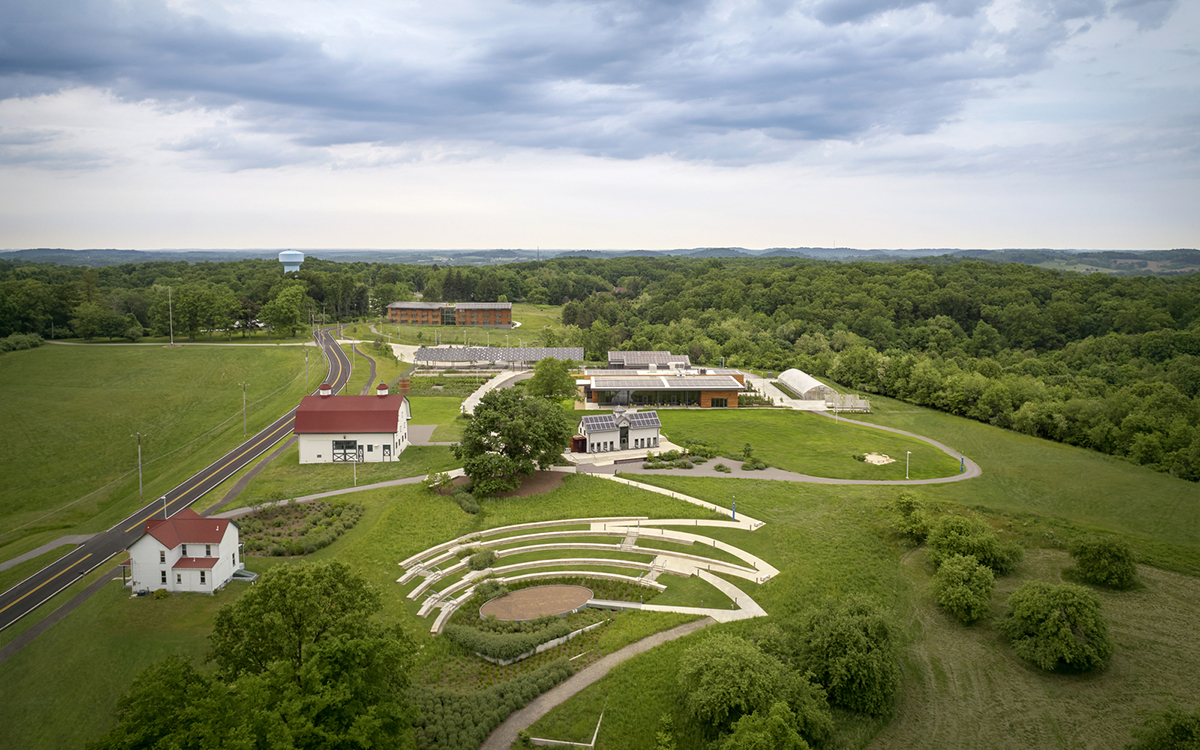
Eden Hall Campus, Chatham University
The alma mater of none other than Rachel Carson (class of 1929) boasts an academic community (Eden Hall Campus) designed expressly to model sustainable living and management techniques through rain-water capture systems, aquaculture labs, and more. Chatham has also achieved a campus-wide net-zero energy footprint, thanks largely to wind and photovoltaic power. (Student interns manage and control one of the microgrids.) Thirteen years ago, this ahead-of-its-time cool school eliminated plastic water bottles (though it's had to temporarily suspend the policy due to COVID-19). Chatham boasts two native plant gardens, in addition to its work-and-pick garden and solar-thermal greenhouse, both of which supply all dining hall produce. Once the pandemic struck and students went home, Chatham created a free community CSA to ensure the fruits of the garden went to good use. And rather than laying off shuttle drivers, administrators put them to work at temperature-check stations until classes and shuttle routes resumed.
Score 80.04 | Lowell, Massachusetts
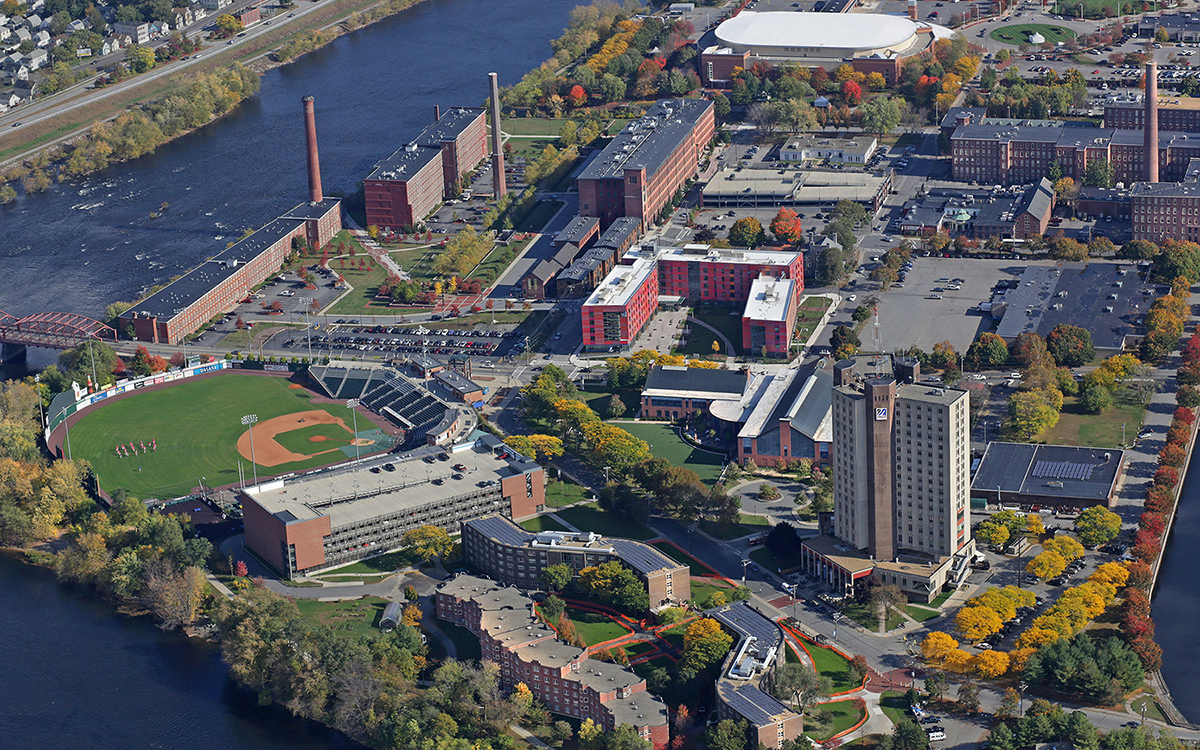
Lowell East Campus, University of Massachusetts, Lowell
An urban campus within a diverse post-industrial city, UMass Lowell designed its Urban Agriculture Program—with year-round growing space in greenhouses, on rooftop gardens, and on a small urban farm—to ramp up community food access and benefit food-insecure students. The school also worked with Lowell (nicknamed “America’s Venice”) to redesign bridges, create active transportation corridors, and further plan infrastructure that would better accommodate pedestrians, cyclists, and public transit buses. Through a competitive SEED fund, UMass Lowell has made it possible for students to get funding to implement projects like pollinator habitats, hybrid bus shuttles, and secure, covered bicycle storage.
Score 80.04 | Amherst, Massachusetts
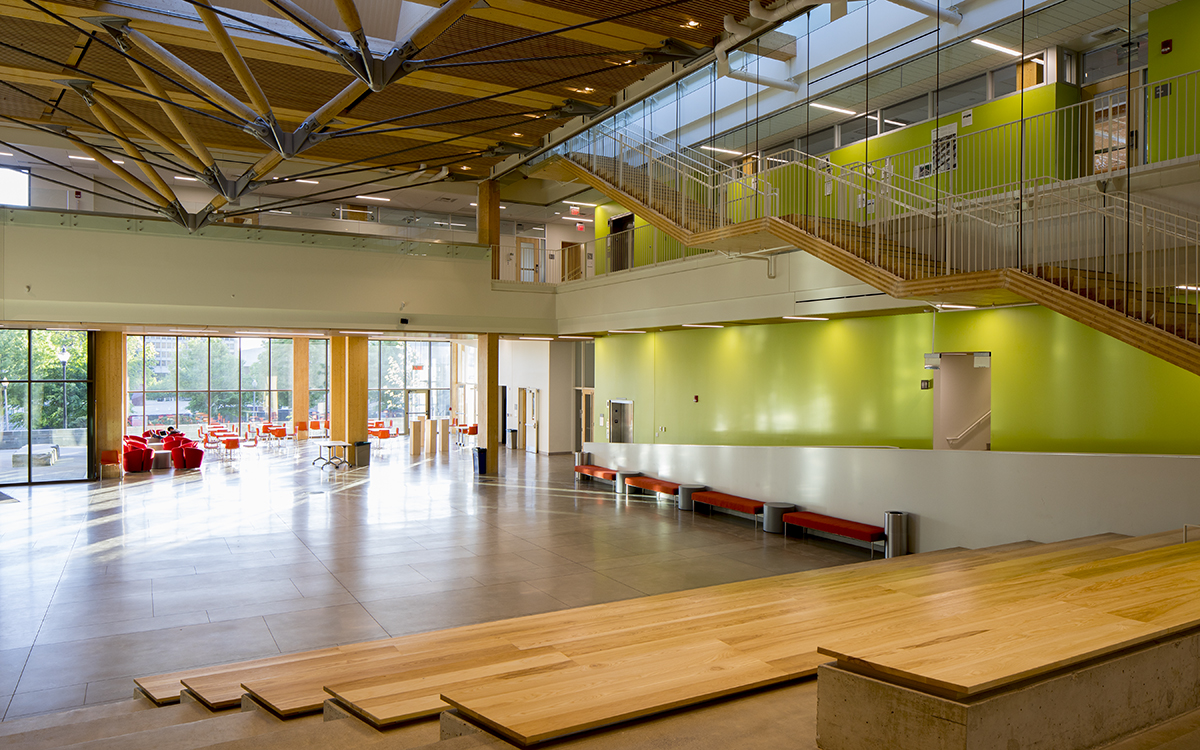
University of Massachusetts, Amherst
Each year, the UMass Energy Corps trains and mobilizes students to work closely with Massachusetts municipalities, where they help officials to reduce their emissions via building retrofits and comprehensive energy audits. Home to the Northeast Climate Adaptation Science Center, UMass Amherst works with regional researchers and graduate science students to develop tools needed to help fish, wildlife, and ecosystems adapt to the impacts of climate change. Back on campus, New England’s largest university has launched a popular MS in Sustainable Building Systems and a certificate in Offshore Wind Energy. A recently launched student journal, Paperbark Literary Magazine, offers students a space to engage around issues of sustainability in the information age.
Score: 80.67 | Carlisle, Pennsylvania
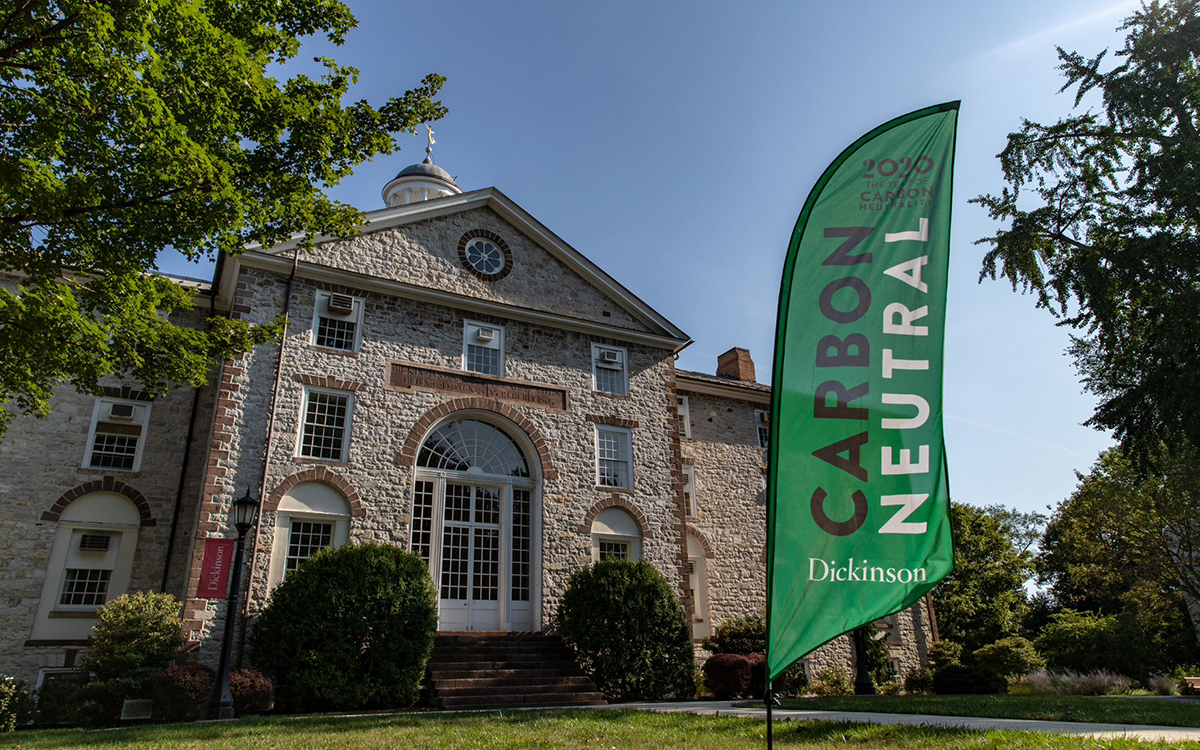
Dickinson College
The very green Red Devils became carbon-neutral this past school year, with help from an LED lighting retrofit, the installation of a three-megawatt solar field on campus, and a campus-wide behavior change campaign. The campaign—which is based in behavioral psychology and focused around encouraging accessible, equitable, and high-impact behaviors—kicked off last September with a walk/bike/rideshare transportation challenge. Then came Plant-Based Eating October and Conscious Purchasing Decisions November. When classes went remote last March, Dickinson challenged students to bone up on local environmental justice issues, contact local representatives, and get their families to embrace low-carbon transportation. Faculty developed a summer intensive program through which students and alumni could explore the intersections between sustainability and racial justice—which made it possible for participants to process last summer’s civil unrest in real time, with their campus community.
Score 81.47 | Berkeley, California
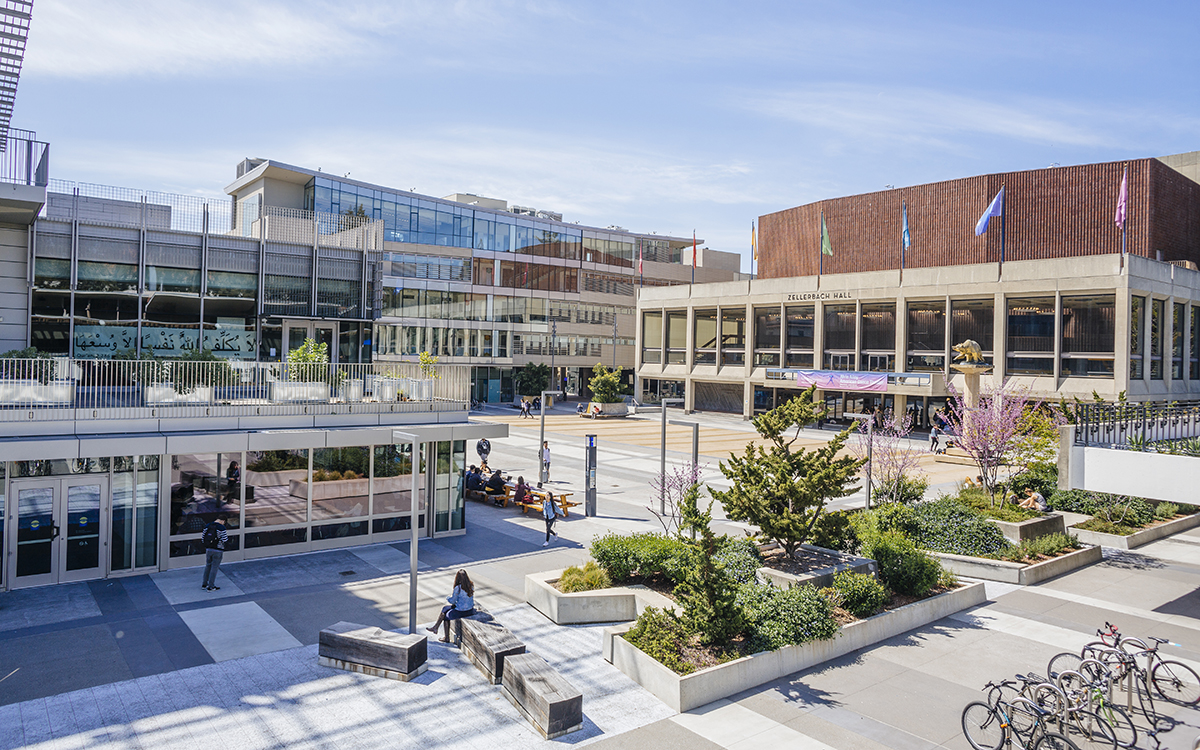
University of California, Berkeley
After the coronavirus radically shifted students’ second semesters, UC Berkeley put together more than 40 virtual Earth Month events and unveiled a Resilient Sustainability Community Fellowship. It employed students (primarily graduating seniors facing a pandemic-challenged job market) to design a sustainability-focused online orientation for this year’s 8,000 freshmen and to develop this October’s month-long campus environmental justice initiative. Due to student pressure, the university recently committed to the total elimination of nonessential single-use plastics by 2030—the most aggressive ban in the nation. Last year, students planned the first-ever Students of Color Environmental Conference, bringing together BIPOC students from across California to collaborate on environmental justice actions. The Golden Bears are also retrofitting an art museum into Berkeley’s first zero-carbon building.
Score 82.14 | Ithaca, New York
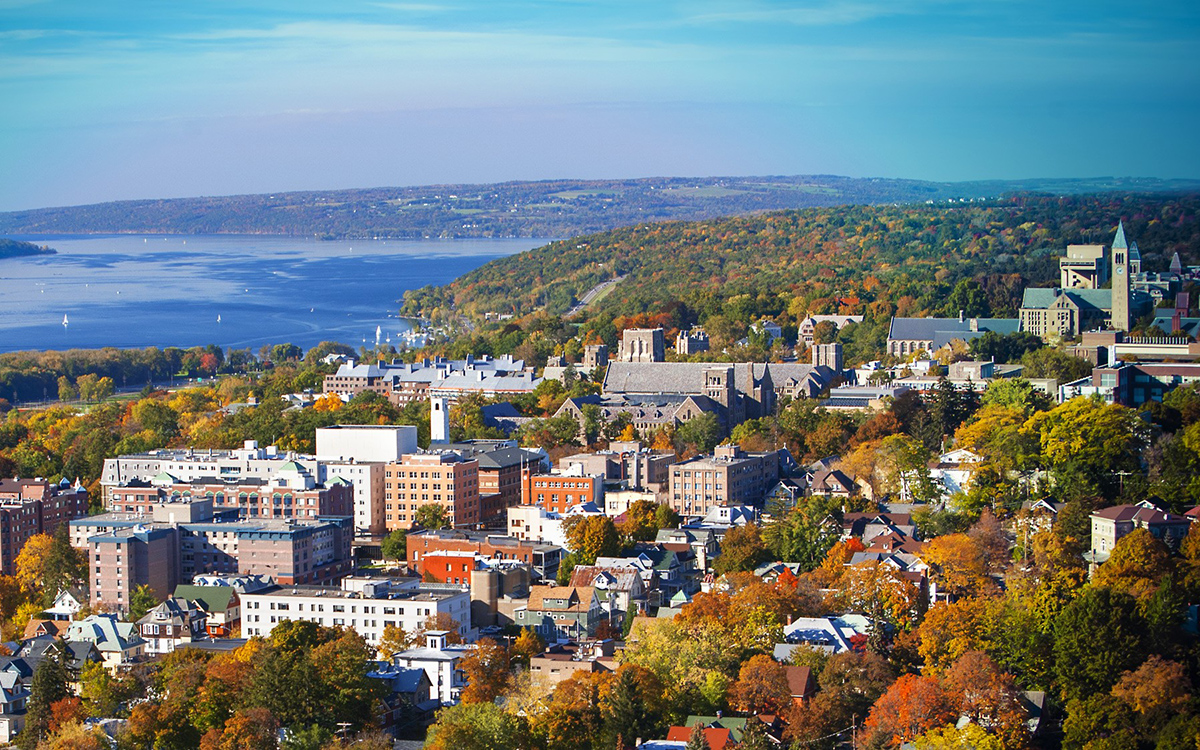
Cornell University
In March 2020, Cornell saw 100 percent of its campus power needs met by solar, hydropower, and other renewable energy projects. In May, the Cornell Board of Trustees announced a moratorium on fossil fuel investments, following more than a decade of student and faculty activism. This past school year also marked the first that the coolest among the Ivies offered the entire campus community—students, faculty, administrators, and other staff—peer-to-peer sustainability education. Green Teams trained in behavior change science are tasked with assessing the attributes, cultures, and resources unique to various aspects of the university—the idea being that sustainability endeavors can mean one thing to engineering students and quite another to liberal arts majors. The teams then develop five-year sustainability goals in accordance with their findings. What’s more, a third of all Cornell faculty now perform sustainability research.
Score 83.20 | Quebec City, Quebec
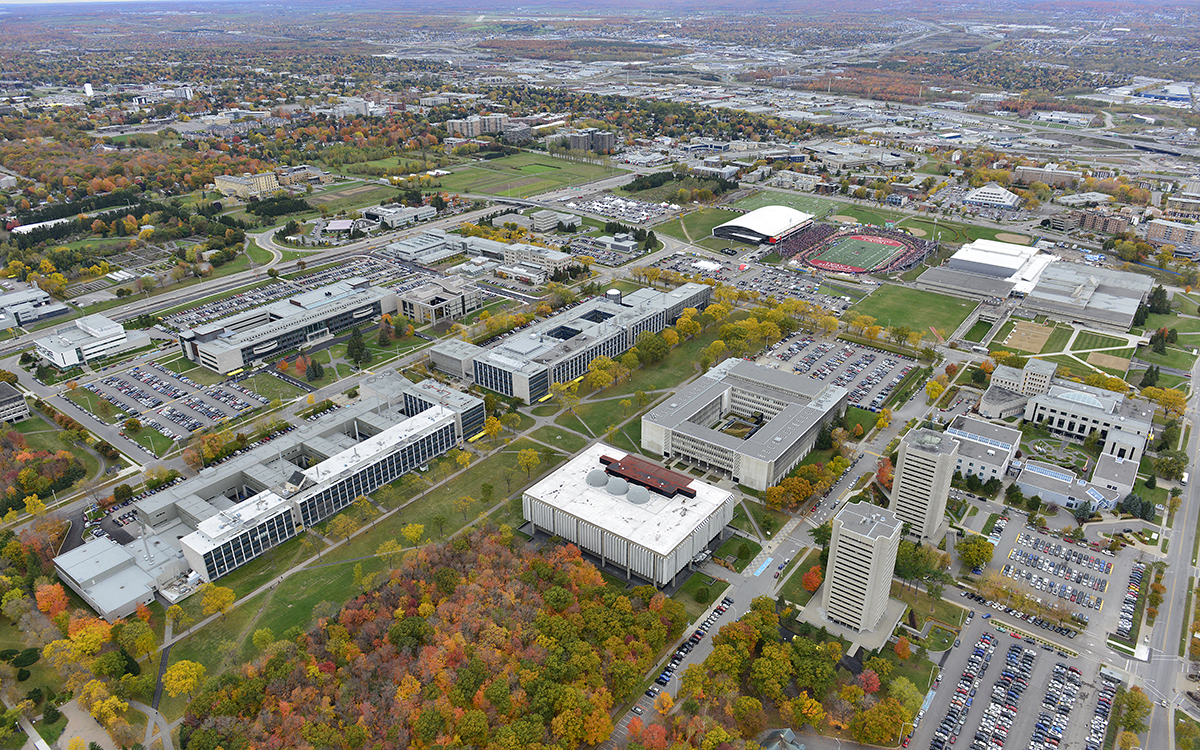
Universite Laval
Universite Laval may be the rookie on our Cool Schools list, but with 398 environmental course offerings, this francophone university of 40,000+ students is a green giant. Thanks to its 153 square miles’ worth of carbon-sink research forest, the addition of an electric boiler to its heating system, and carbon offset program (responsible for 14,342 trees planted in the past year), Universite Laval became Canada’s first carbon-neutral university (on a voluntary basis) in 2015. Since then, Laval has maintained its neutrality, banned plastic water bottles, instituted reusable dishes in all cafes (with fees for single-use containers), and reduced the carbon-intensity of its investment profile. This December, it’s launching the International Student Network for Climate Action. The idea is to bring together far-flung student leaders to share best sustainability practices and collaborate on climate action.
Score: 83.62 | Waterville, Maine
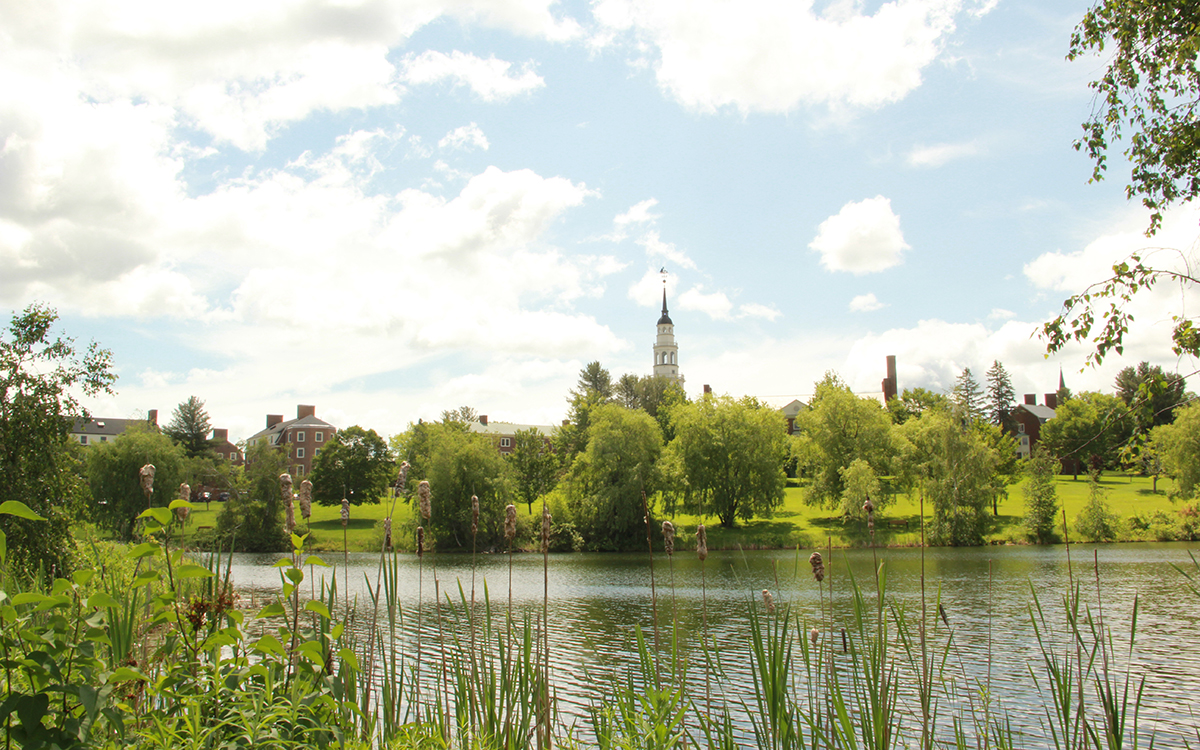
Colby College
When Colby sent its campus community home in March, EcoReps (students paid to devise and lead sustainability initiatives) launched a virtual eco challenge that encouraged home-bound Mules to participate in waste audits, energy audits, mindfulness activities, and discussions about environmental film documentaries. In part, the challenge served to further Colby’s pre-pandemic series on energy and exhaustion, which since the start of the last school year offered lectures and viewings related to how energy shapes our lives, through the lens of environmental justice. When campus shut down and cafeterias closed, Colby kept dining-service staffers on and tasked them with tending to the campus organic garden, where they've harvested nearly 2,200 pounds of produce to date (anything not used in campus dining halls has been donated to the Mid-Maine Homeless Shelter). The school just unveiled a 35-acre athletic center on native meadows whose plants were selected for their ability to attract pollinators and restore biodiversity. The project is pursuing SITES Silver and LEED Gold certification.
Score: 84.30 | Durham, New Hampshire
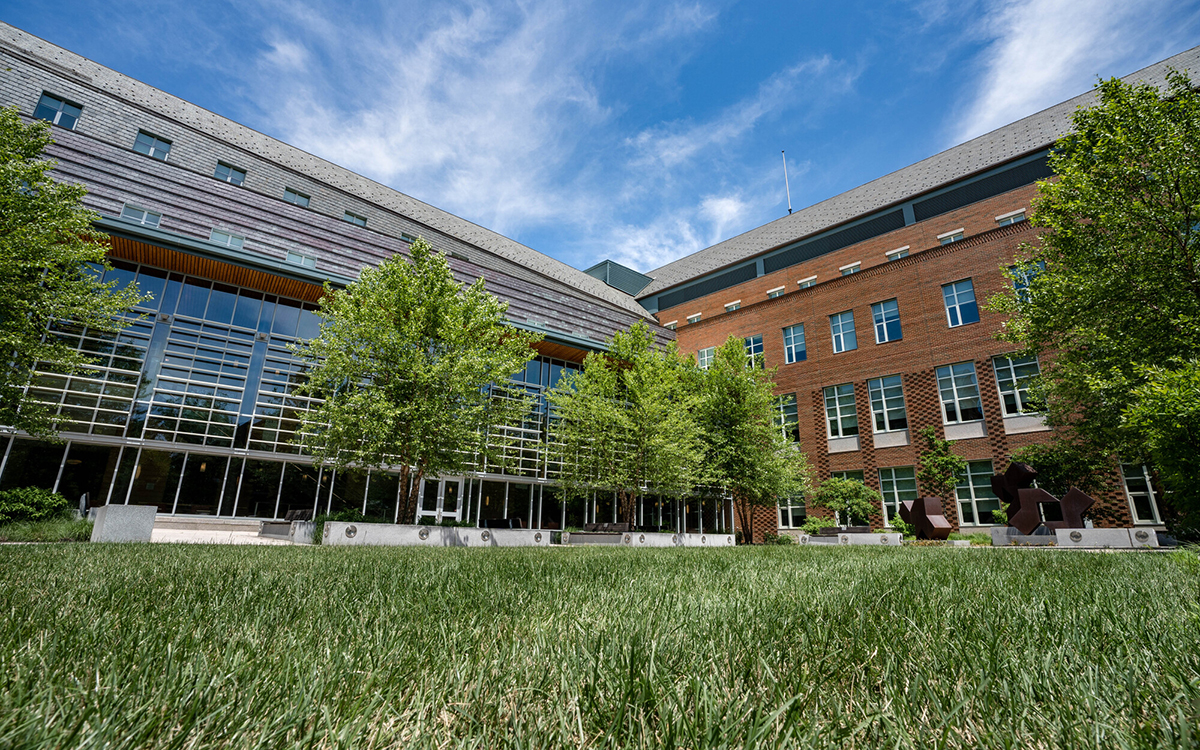
University of New Hampshire, Paul College
UNH has moved about $56 million into ESG (environmental-, social-, and governance-based) qualified investments, and all new gifts to the university are now automatically invested in the ESG pool. The newly launched B-Impact Clinic trains students in the methodology of B-Corp certification and matches them with local companies seeking help in becoming certified, re-certified, and/or in assessing and improving their social and environmental performance. The school serves as the hub for a sustainability network called Food Solutions New England, through which it has created a 21-Day Racial Equity Challenge—including trainings, readings, and videos designed to facilitate conversations about equity in the food system—now used by other universities and major NGOs too. In addition to continued efforts to reduce its carbon footprint (59 percent reduction since 2001, to date) UNH is one of a handful of campuses tackling its nitrogen footprint, in order to protect water and air quality as well as to mitigate climate change. Students and faculty recently developed a nifty combined carbon and nitrogen footprint analysis tool, the Sustainability Management and Analysis Platform (SIMAP), which has more than a thousand users from campuses across the globe.
Score: 84.68 | Storrs, Connecticut
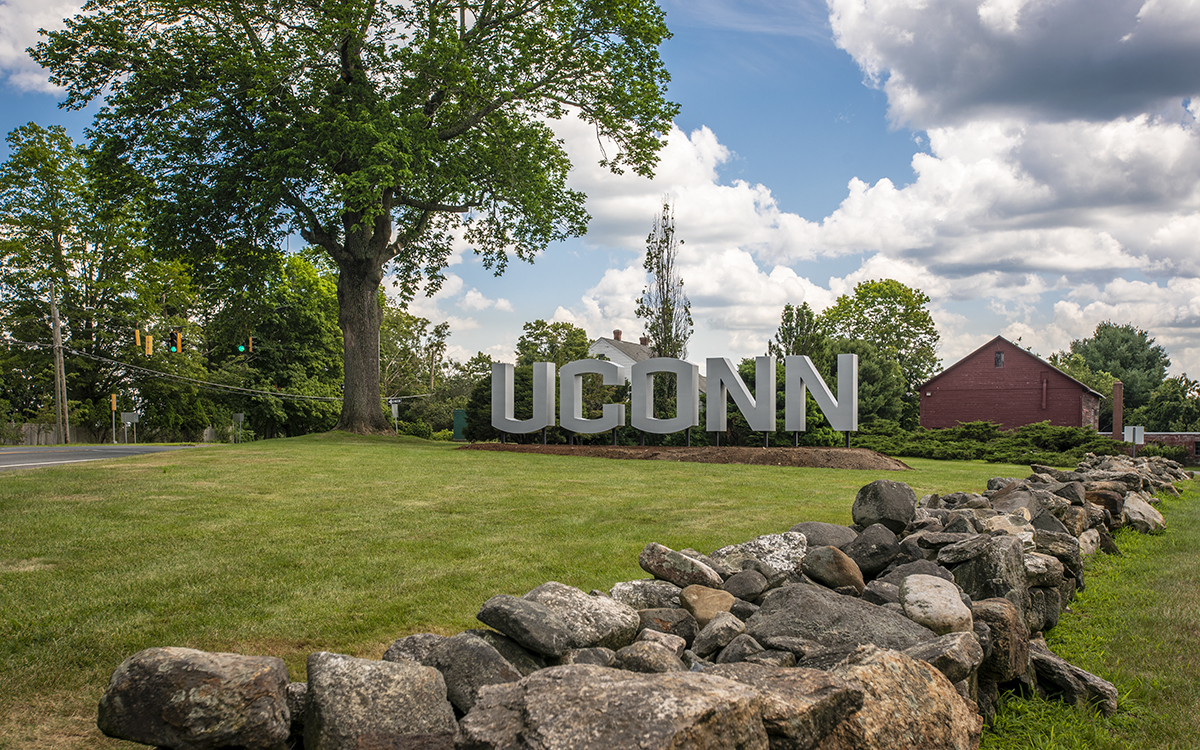
Situated on the site of the former campus landfill, UConn’s Hillside Environmental Education Park—including 165 acres of woodlands, wetlands, and pollinator gardens, and featuring hiking trails and interpretive signs—is ideal for social distancing. Thanks to the university's new environmental literacy gen-ed requirement, students sign up for courses like Politics of Oil and Insects, Food, Culture. Last September, several hundred UConn Huskies marched to demand that the university president accelerate climate sustainability goals in accordance with the UN recommendations outlined in the landmark 2018 IPCC report. It worked—UConn has moved its carbon-neutrality goal from 2050 to 2040 and will phase out reliance on its on-campus natural gas facility in favor of energy from renewable sources such as solar and geothermal.
Score: 84.68 | Fort Collins, Colorado
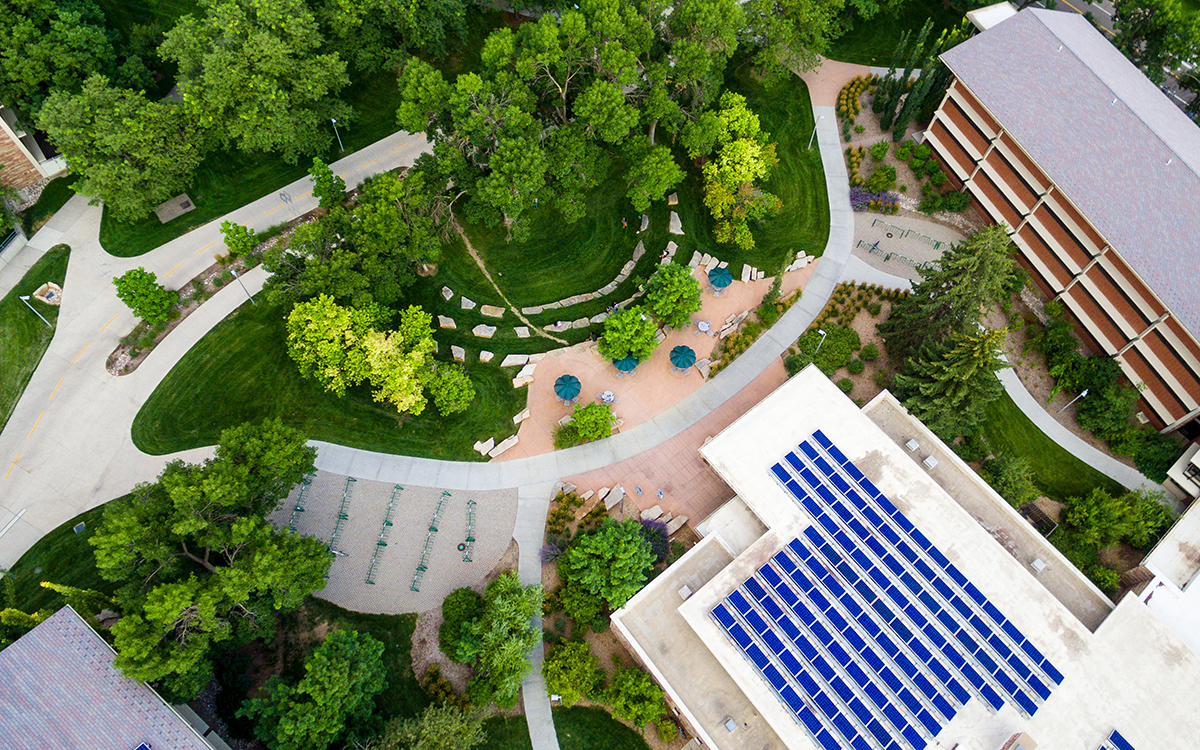
Solar Array on Braiden Hall, Colorado State University
The Rams’ robust Peer Education Program trains student Eco Leaders in sustainability engagement—so they can optimally tailor messaging about transportation, food systems, and behavior change to their peers—and installs them in every residence hall as well as a popular student apartment community. When unemployment rose and some dining halls closed last March, food insecurity among students spiked, so the school hustled to distribute trash-bound food through a pop-up COVID-19 food bank in the student center theater. Last year, Colorado State announced that the horticulture center living lab that grows greens for campus dining centers—which began three years ago with one student and a single table of lettuce—was sufficiently robust to support a full practicum program and provide greens for all six campus dining centers. Colorado State also created a PhD program out of the popular undergraduate major, Ecosystem Sustainability, and added a Corporate Sustainability component to its MBA program. It all adds up to a two-spot leap for this very cool community of 34,000+ students.
Score: 85.21 | Syracuse, New York
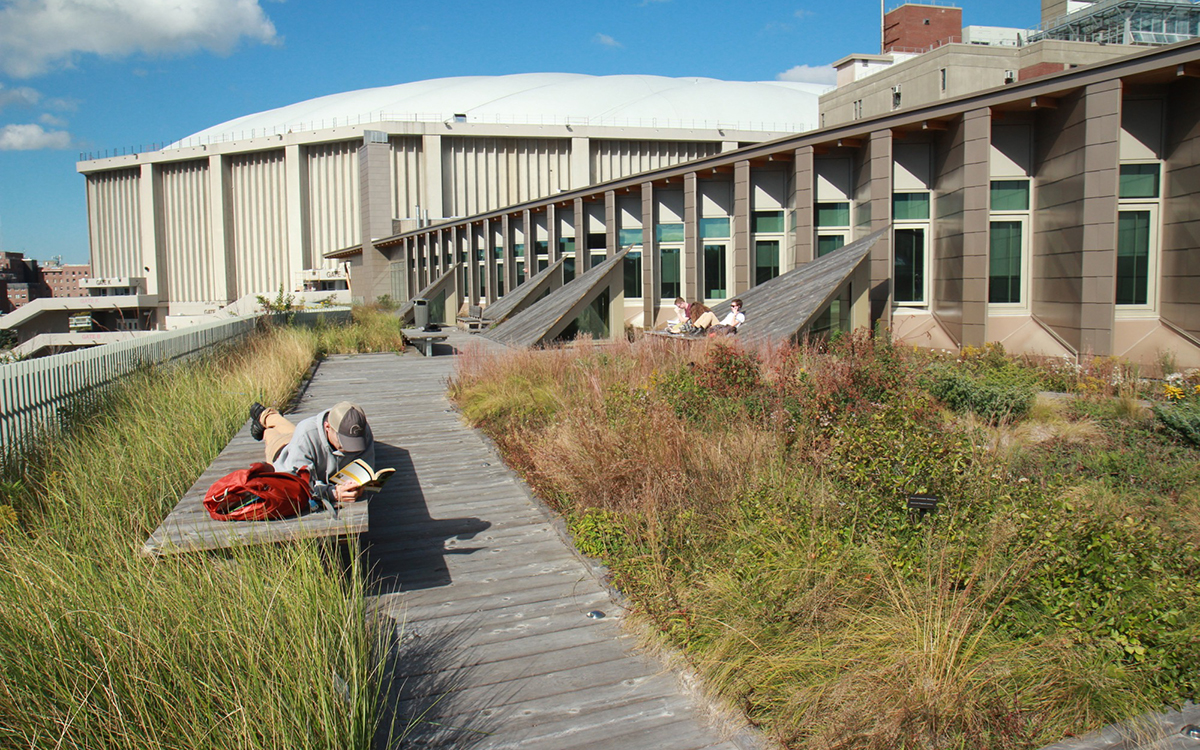
6: SUNY College of Environmental Science and Forestry
Since 2018, the coolest school within New York's extensive public university system has halved energy costs by retrofitting aging buildings and upgrading heating, ventilation, and compressors. SUNY-ESF has already diverted about 50 percent of the Mighty Oaks’ annual waste stream away from landfills through efforts like composting. This year, it will be offering free reusable menstrual products to the campus community, putting the school on target to meet its 2025 zero-waste goal early. New York State just granted SUNY-ESF nearly $6 million to form the NYS Center for Sustainable Materials Management, through which faculty, staff, students, and other partners will manage a statewide waste reduction, reuse, and recycling campaign and attempt to develop superior biodegradable plastics. Students, meanwhile, have spearheaded a drive to eliminate all single-use plastics from campus by the end of 2020.
Score 86.64 | Merced, California
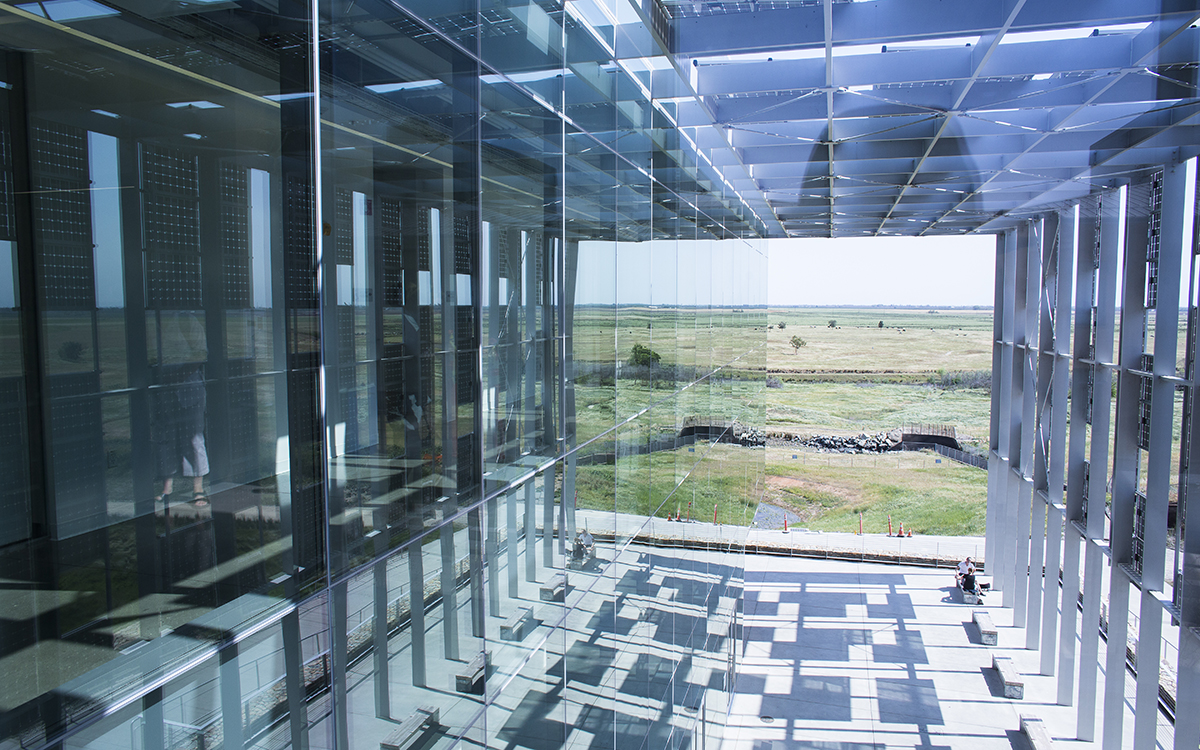
University of California, Merced
The UC system’s youngest outpost is on track to announce it has achieved carbon neutrality by 2020—five years ahead of schedule—thanks to on-site solar and LEED Platinum–certified buildings. Realization of UC Merced’s zero-waste goals isn’t far off, either. The Bobcats already divert the vast majority of all waste from the landfill, thanks in part to Green Labs and Green Offices certification programs and a zero-waste sorting line, all of which are run largely by students. Bobcat Eats, a food-waste prevention program, has diverted more than 2 million pounds of food from the landfill through a partnership with a community food bank. Undergrads earn sustainability badges through eco-oriented coursework, and a graduate Management of Innovation, Sustainability, and Technology program focuses on management strategies that prioritize long-term eco-sustainability and social justice in concert with economic profit.
Score: 89.31 | Tempe, Arizona
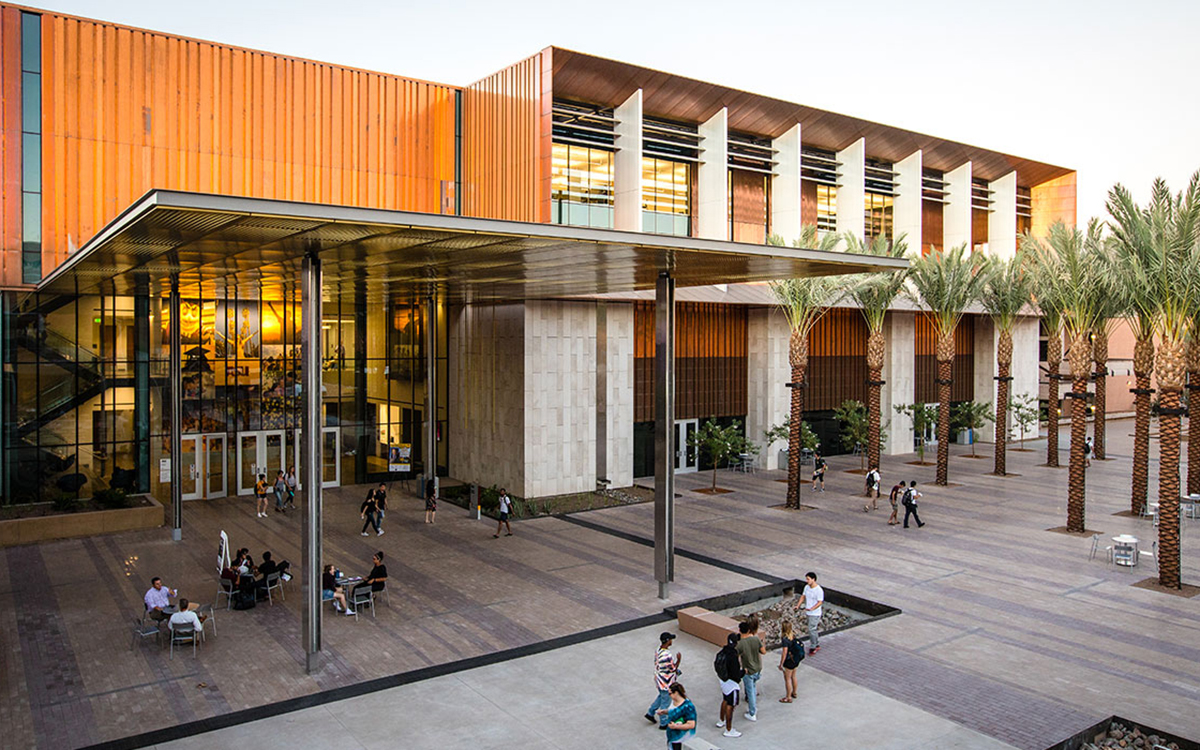
Student Pavilion, Arizona State University
Somewhat ironically, the Sun Devils just keep getting cooler. The past year saw another solar installation and a new wind power project go online. This coming November, ASU is planting 1,000 native trees in its carbon sink forest (which now includes a climate tower, replete with weather- and soil-measuring equipment). At ASU’s Center for Negative Carbon Emissions, grad students are developing mechanical carbon capture trees, and the Sun Devils just broke ground on a Global Futures Laboratory. Billed as a “medical school for the Earth,” it’s a transdisciplinary hub for the hundreds of faculty and scholars working on issues of climate crisis adaptation and mitigation (think direct-air carbon capture, deployable microgrids, and circular economy development), and aims to engage existential threats with speed and urgency not typically associated with academia. It all adds up to an impressive six-spot leap since last year’s rankings.
Score: 89.63 | Kamloops, British Columbia

TRU Solar Panels on the Nursing and Population Health building roof, Thompson Rivers University
The top-performing school of our 2019 rankings remains super cool—in part by finding greener ways to keep its community warm. Thompson Rivers is working to replace all its natural gas boilers with electric ones, which should render the whole university carbon-neutral (sans offsets!) within the next five to 10 years. This past year, TRU's Environmental Sustainability Advisory Committee—comprised of students, staff, and faculty—launched a Single-Use Item Elimination Task Force charged with devising an “elimination list,” finding more sustainable options for each and then eradicating each from campus. Starting in fall 2021, all undergraduate baccalaureate degree students will be required to take a course that meets TRU's Citizenship Institutional Learning Outcome by learning to critically evaluate and apply socially responsible, sustainable, and ethical principles to everyday actions.
Score: 89.86 | Palo Alto, California

Main Quad, Stanford University
At Stanford, heat-recovery technology uses recycled water to heat buildings, the Commute Club provides cash incentives for staffers to carpool or bike to campus, and on- and off-site solar provides most electricity. Through the online community engagement platform My Cardinal Green, students can take surveys to help gauge the efficacy of their current sustainability behaviors and receive customized recommendations for improvement actions. Once they prove they’ve performed them—by, say, installing a smart power strip at a workstation or touring a campus waste facility—students can earn points toward cash rewards. Football fans receive “tailgate kits” containing different-colored trash bags so they can handily sort compostables from recyclables from landfill-bound waste as well as maps to dumpsters and instructions for sorting. This past school year, Stanford announced a School of Sustainability dedicated to the acceleration of climate solutions.
Score: 89.95 | Irvine, California
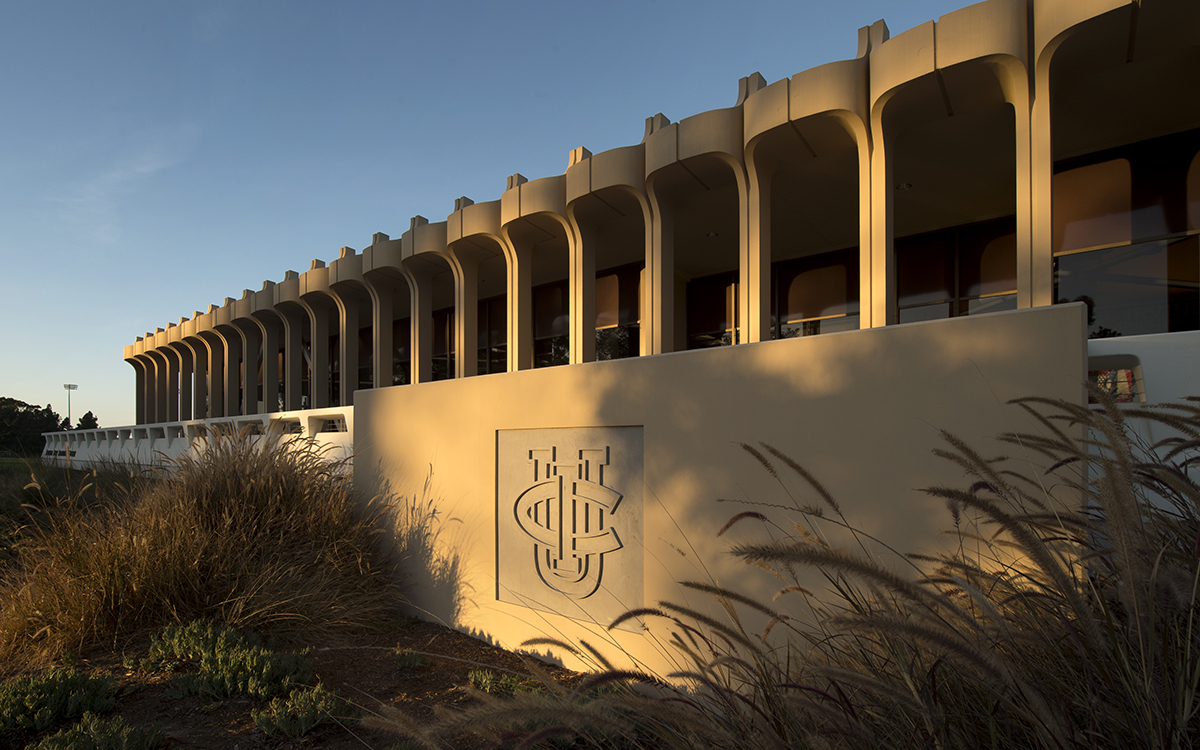
University of California, Irvine
The eminently cool Anteaters have done what no other school has—rank among Sierra's top 10 most sustainable colleges for 11 years in a row. Thanks to precision-technology sensors and software, UC Irvine's laboratories have become paragons of energy efficiency, emulated by national labs including the CDC's. (Relatedly, infectious disease doctors have been studying UCI's ventilation systems, designed to remove airborne pathogens in labs.) Anteater researchers are working to harness the storage potential of green hydrogen to complement their decarbonized electric grid and enable zero-carbon solutions for seasonal storage, heavy transit, and high-temperature manufacturing processes. When learning went remote last spring, UCI quickly adapted its pantry food distribution services to continue to serve thousands of students—an online appointment system allows them to reserve weekly food boxes, and to redeem monthly produce vouchers from a local farm. UCI's Pump to Plug program has helped reduce 23,125 metric tons of commuter CO2 emissions by incentivizing faculty, staff, and students to switch to EVs. How cool is that?
 The Magazine of The Sierra Club
The Magazine of The Sierra Club
